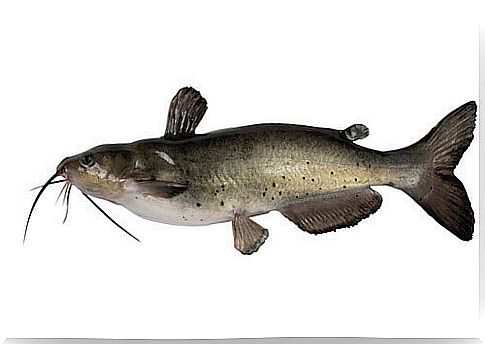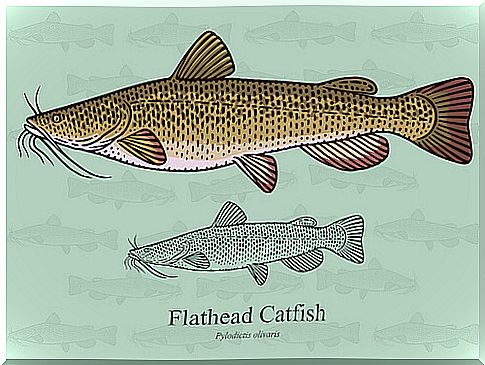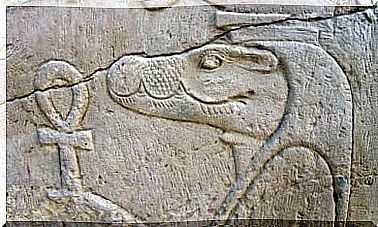The Flathead Catfish: Physical Characteristics

Flat-headed catfish is the common name attributed to Pylodictis olivaris , a freshwater fish belonging to the Ictaluridae family and to the order of the Siluriformes .
Physical characteristics of the flathead catfish
The flathead catfish belongs to the order of the Siluriformes , the components of which are known as catfish. This name is due to the typical “whiskers” that these animals have around their mouth; although not all catfish species have “whiskers”.
The flat-headed catfish has the morphological characteristics typical of Siluriformes . Being part of the bagrids, these fish are devoid of scales and have a smooth body covered only by the skin.
These fish have very sensitive barbels and are equipped with Weber’s apparatus. This apparatus connects the swim bladder with the auditory system of the fish thus amplifying the reception of sounds.
In addition, the dorsal and pectoral fins feature a profile that may or may not be serrated. In some cases, these fins can be hard and easily visible. In addition, they can head outward, thereby increasing the volume of the fish’s body, or inward.
The flathead catfish may have a dorsal fin with spines, but the back fins lack them.

This fish can weigh up to 55 kilos and has a life expectancy of 20 years. Its dimensions vary between 46 and 50.8 centimeters.
Diet
The flathead catfish is a predator. It feeds mainly on sea bass and prawns. However, it has sometimes been observed that it feeds on other catfish species as well.
Typically, they hunt at night in areas with shallow water. During the day, they rest in their burrows.
Ecology
These fish usually breed in shallow, murky areas of streams.
Young individuals find themselves in rocky, sandy or sediment-filled areas called “riffles”. In streams, the “riffles” are areas where the water flows quickly and where different aquatic species live together.
Adult individuals, on the other hand, find themselves in deeper areas where there are accumulations of wood or other materials carried by the current.
Habitat and distribution of the flathead catfish
The flathead catfish is a freshwater fish that lives throughout the United States and Mexico. Specifically, this fish is native to the basins of the Great Lakes and river basins of the Mississippi, Ohio and Missouri.
It is also present in several states of North America such as western Pennsylvania, North Dakota, Georgia or Alabama. Also, it can be found in South America (specifically Mexico).
This fish has been introduced to numerous other American states such as Florida, South Carolina, Idaho, Oregon, Washington, California and Arizona. Outside of the United States, we can find it in Canada and other countries.
State of conservation
The flathead catfish belongs to the category of Least Concern according to the IUCN. This position within the classifications is due to the large number of existing subpopulations and also to the large number of specimens present on the planet.
These fish are not exposed to major threats that can reduce their population numbers.
Indeed, it seems that the number of specimens is stable. However, in the last ten years (three generations) a decrease in the number of individuals has been assumed. Despite this, as they do not decrease with high speed, this species has not been classified as an endangered species.
For these reasons, there are no exceptional measures for the protection of flathead catfish or conservation plans. Furthermore, there is no management plan, monitoring or research project.
Curiosities about the flathead catfish
This fish is one of the most hunted in sport fishing competitions. Generally, it is the favorite prey of many anglers.

To catch it, anglers need sturdy medium to heavy weight fishing rods that measure around 1.8 or 3 meters in length. To attract this fish, live fish baits are used such as river herring, sunfish or carp, which vary in size from 13 to 30 centimeters.









